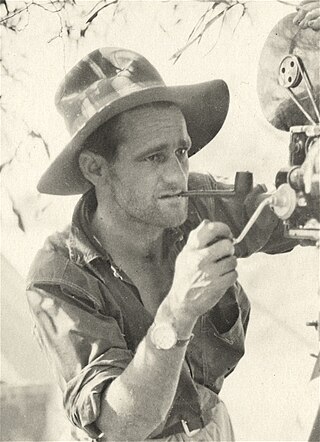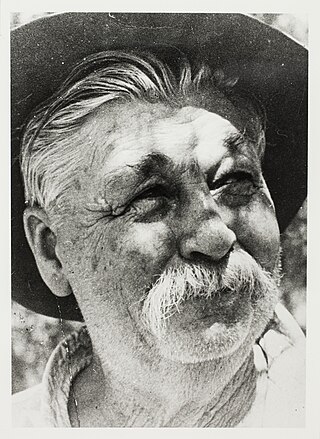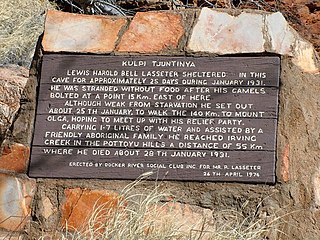
The Territory of Ashmore and Cartier Islands is an uninhabited Australian external territory consisting of four low-lying tropical islands in two separate reefs, as well as the 12-nautical-mile territorial sea generated by the islands. The territory is located in the Indian Ocean situated on the edge of the continental shelf, about 320 km (199 mi) off the northwest coast of Australia and 144 km (89 mi) south of the Indonesian island of Rote.

Palmyra Atoll, also referred to as Palmyra Island, is one of the Northern Line Islands. It is located almost due south of the Hawaiian Islands, roughly one-third of the way between Hawaii and American Samoa. North America is about 3,300 miles northeast and New Zealand the same distance southwest, placing the atoll at the approximate center of the Pacific Ocean. The land area is 4.6 sq mi (12 km2), with about 9 miles (14 km) of sea-facing coastline and reef. There is one boat anchorage, known as West Lagoon, accessible from the sea by a narrow artificial channel.
Lasseter's Reef refers to the purported discovery, announced by Harold Bell Lasseter in 1929 and 1930, of a fabulously rich gold deposit in a remote and desolate corner of central Australia. Lasseter's accounts of the find are conflicting and its precise location remains a mystery—if it exists.

Sir George Hubert Wilkins MC & Bar, commonly referred to as Captain Wilkins, was an Australian polar explorer, ornithologist, pilot, soldier, geographer and photographer. He was awarded the Military Cross after he assumed command of a group of American soldiers who had lost their officers during the Battle of the Hindenburg Line, and became the only official Australian photographer from any war to receive a combat medal. He narrowly failed in an attempt to be the first to cross under the North Pole in a submarine, but was able to prove that submarines were capable of operating beneath the polar ice cap, thereby paving the way for future successful missions. The US Navy later took his ashes to the North Pole aboard the submarine USS Skate on 17 March 1959.

Lasseter Highway is a fully sealed 244 km (152 mi) highway in the Northern Territory of Australia. It connects Yulara, Kata Tjuta and Uluru east to the Stuart Highway at Erldunda. The highway is named after Lewis Hubert Lasseter, who claimed to have discovered a fabulously rich gold reef west of Kata Tjuta.

Australian folklore refers to the folklore and urban legends that have evolved in Australia from Aboriginal Australian myths to colonial and contemporary folklore including people, places and events, that have played part in shaping the culture, image and traditions that are seen in contemporary Old Australia.

The Australian Overland Telegraph Line was a telegraphy system to send messages over long distances using cables and electric signals. It spanned 3200 kilometres between Darwin, in what is now the Northern Territory of Australia, and Adelaide, the capital of South Australia. Completed in 1872, it allowed fast communication between Australia and the rest of the world. When it was linked to the Java-to-Darwin submarine telegraph cable several months later, the communication time with Europe dropped from months to hours; Australia was no longer so isolated from the rest of the world. The line was one of the great engineering feats of 19th-century Australia and probably the most significant milestone in the history of telegraphy in Australia.
The history of the Northern Territory began over 60,000 years ago when Indigenous Australians settled the region. Makassan traders began trading with the indigenous people of the Northern Territory for trepang from at least the 18th century onwards.

The Great Central Road is a mostly unsealed Australian outback highway that runs 1,126 km (700 mi) from Laverton, Western Australia to Yulara, Northern Territory. It passes through a number of small communities on the way.

Ion Llewellyn Idriess was a prolific and influential Australian author. He wrote more than 50 books over 43 years between 1927 and 1969 – an average of one book every 10 months, and twice published three books in one year. His first book was Madman's Island, published in 1927 at the age of 38, and his last was written at the age of 79. Called Challenge of the North, it told of Idriess's ideas for developing the north of Australia.

Arthur Blakeley was an Australian politician who served in the House of Representatives from 1917 to 1934, representing the Labor Party. He was the party's deputy leader from 1928 to 1929 and served as Minister for Home Affairs in the Scullin government (1929–1932).
Warren Lindsay Brown is an Australian author, cartoonist and television presenter.
Phantom Gold is a 1936 Australian adventure film about the search for Lasseter's Reef. It was the first feature from director Rupert Kathner.
Luke Walker is a British/Australian film maker. His 2008 documentary film, Beyond Our Ken explored the group Kenja Communication, a controversial Australian "self-empowerment" organisation. It garnered Walker an AACTA Award for Best Direction in a Documentary nomination. Beyond Our Ken was also nominated for Best Documentary at the Film Critics Circle of Australia Awards and also by the Australian Film Institute.
Torrington Blatchford (1871–1938) was an Australian geologist and was Government Geologist in Western Australia from 1929 until 1934.
Walter Smith also known as Walter Purula (Perrurle) or Wati Yuritja was a legendary Australian bushman from the Arltunga region in the Northern Territory of Australia. Wati Yuritja translates as man of the Water Dreaming).

Ernest Gustav Brandon-Cremer was a New Zealand/Australian moviemaker, newsman, explorer and adventurer. He was a key figure in Australian aviation history, and was especially known for his documentation of Lasseter's Gold Reef as well as his photography of the Solar eclipse of 21 September 1922 at Wallal, Australia.

Central Australia was a territory of Australia that existed from 1927 to 1931. It was formed from the split of the Northern Territory in 1927 alongside the territory of North Australia, the dividing line between the two being the 20th parallel south. The two territories were merged in 1931 to reform the Northern Territory. The seat of government of the territory was Stuart, a town that was commonly known as "Alice Springs" and would be officially renamed so in 1933.

Robert Henry Buck was an Australian pastoralist and bushman who is best remembered as being one of the people to recover the body of Lewis Harold Bell Lasseter.













